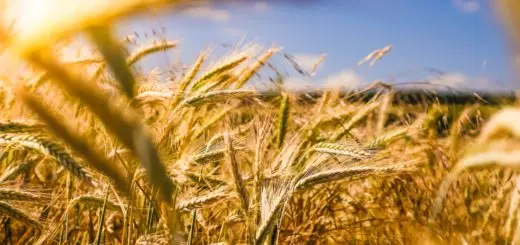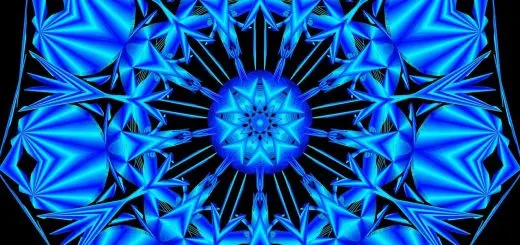Lan Caihe: The Flower Fairy of Daoist Tradition

Looking for more amazing products? Check out our online store and explore our collection here! Happy shopping!
Before diving in, please note: This post is for informational purposes only. If you’d like to know more about how we approach topics, feel free to check out our friendly Disclaimer Page.
Hey there, amazing readers! 
We’re committed to delivering quality posts, and your support (even just sticking around despite the ads) means everything to us. So, bear with us, and thanks for helping us keep the good vibes rolling. Now, on to the fun stuff!
TRANSLATE BUTTON AT THE END OF THE ARTICLE
Lan Caihe: The Flower Fairy of Daoist Tradition
Overview
Lan Caihe, also known as the Flower Fairy, is a significant figure in Daoist tradition.
As a gender-ambiguous deity, Lan Caihe embodies the fluidity and non-conformity often associated with Daoist philosophy.
Lan Caihe is revered for their teachings, moral lessons, and the symbolism of flowers that surrounds their iconography.
This article explores the origins, legends, role in rituals, comparisons to other Daoist figures, artistic representations, influence on popular culture, and significance in gender and LGBTQ+ studies.
Introduction to Lan Caihe and its significance in Daoism
Lan Caihe is one of the Eight Immortals in Chinese folklore and holds a prominent place in Daoist traditions.
Depicted as a wandering beggar, Lan Caihe challenges societal norms through their gender ambiguity, often appearing as both a man and a woman or even as a young child.
This fluidity reflects the fundamental Daoist belief in the harmony between yin and yang, with the Flower Fairy embodying the balance between masculine and feminine energies.
Legends surrounding Lan Caihe’s gender ambiguity
Several legends surround Lan Caihe’s gender ambiguity, adding to their mystique and significance in Daoism.
One legend describes Lan Caihe as a young girl who gained immortality by eating a magical peach.
Another tale tells of Lan Caihe being a young boy who was disowned by their family, leading them to become a beggar.
These stories highlight the transformative power of Daoist practices and the rejection of societal expectations regarding gender roles.
Exploring the historical origins of Lan Caihe
The historical origins of Lan Caihe remain elusive, as their existence is deeply intertwined with folklore and myth.
However, Lan Caihe’s presence can be traced back to the Tang Dynasty (618-907 CE), where they were described in various poems and literary works.
Lan Caihe’s portrayal as a wandering beggar reflects the Daoist belief in embracing simplicity, detaching oneself from material possessions, and cultivating spiritual enlightenment.
Symbolism of flowers in Lan Caihe’s iconography
Flowers play a significant role in Lan Caihe’s iconography.
Lan Caihe is often depicted holding a basket of flowers, with each flower carrying symbolic meaning.
The lotus flower represents purity and spiritual enlightenment, while the peony symbolizes prosperity and beauty.
By incorporating flowers into their iconography, Lan Caihe represents the Daoist belief in the interconnectedness of nature and the spiritual realm.
The role of Lan Caihe in Daoist rituals and ceremonies
Lan Caihe’s presence in Daoist rituals and ceremonies is often associated with bringing good fortune and protecting against evil spirits.
In these practices, devotees may offer flowers or burn incense to honor Lan Caihe and seek their blessings.
Lan Caihe’s gender ambiguity also serves as a reminder to embrace the fluidity of existence and to transcend societal expectations in the pursuit of Daoist principles.
Lan Caihe’s teachings and moral lessons in Daoism
Lan Caihe is revered for their teachings, which emphasize the Daoist principles of simplicity, spontaneity, and living in harmony with nature.
They teach followers to let go of attachments to material possessions and societal conventions, encouraging them to cultivate inner peace and spiritual growth.
Lan Caihe’s moral lessons transcend gender and challenge societal norms, promoting acceptance and understanding.
Comparisons between Lan Caihe and other Daoist figures
Lan Caihe shares similarities with other Daoist figures, particularly in their embodiment of the fluidity and non-conformity that is central to Daoist philosophy.
They are often compared to the eccentric immortal Zhongli Quan, who is also known for their unpredictable behavior and disregard for societal expectations.
Both Lan Caihe and Zhongli Quan serve as reminders of the transformative power of Daoist practices and the potential for personal growth.
Artistic representations of Lan Caihe in Chinese culture
Lan Caihe has been depicted in various art forms throughout Chinese history, including paintings, sculptures, and operas.
These artistic representations often highlight the Flower Fairy’s gender ambiguity and their association with flowers.
Explore the Path to Spirituality and Enlightenment – Start Here.
Paintings depict Lan Caihe in colorful and flowing garments, surrounded by blooming flowers, while sculptures capture their whimsical and elusive nature.
These artistic depictions contribute to the rich visual heritage of Daoist traditions.
The influence of Lan Caihe on modern popular culture
Lan Caihe’s influence extends beyond traditional religious practices and has permeated modern popular culture.
Their gender ambiguity and non-conformity have inspired contemporary artists, writers, and performers, who explore themes of identity and self-expression.
Lan Caihe’s image is often used in fashion, music, and other forms of creative expression, serving as a symbol of liberation and empowerment.
The significance of Lan Caihe in gender and LGBTQ+ studies
Lan Caihe holds immense significance in gender and LGBTQ+ studies, as their character challenges conventional gender norms.
Lan Caihe’s fluidity and acceptance of both masculine and feminine energies present an alternative perspective on gender identity.
Their depiction as a wandering beggar also represents the marginalized and disenfranchised, making Lan Caihe an important figure for discussions on inclusivity and acceptance.
Conclusion: The enduring legacy of Lan Caihe in Daoism
Lan Caihe, the Flower Fairy, remains an enduring and influential figure within Daoist tradition.
Their gender ambiguity, teachings, and symbolism of flowers continue to inspire and resonate with individuals seeking spiritual enlightenment and personal growth.
Lan Caihe’s significance in gender and LGBTQ+ studies further highlights the progressive nature of Daoist philosophy.
As we delve deeper into the complexities of gender and identity, Lan Caihe serves as a reminder to embrace individuality, challenge societal expectations, and find harmony within oneself and the natural world.

The Enlightenment Journey is a remarkable collection of writings authored by a distinguished group of experts in the fields of spirituality, new age, and esoteric knowledge.
This anthology features a diverse assembly of well-experienced authors who bring their profound insights and credible perspectives to the forefront.
Each contributor possesses a wealth of knowledge and wisdom, making them authorities in their respective domains.
Together, they offer readers a transformative journey into the realms of spiritual growth, self-discovery, and esoteric enlightenment.
The Enlightenment Journey is a testament to the collective expertise of these luminaries, providing readers with a rich tapestry of ideas and information to illuminate their spiritual path.
Our Diverse Expertise
While our primary focus is on spirituality and esotericism, we are equally passionate about exploring a wide range of other topics and niches 

To ensure we provide the most accurate and valuable insights, we collaborate with trusted experts in their respective domains 
Our blog originally focused on spirituality and metaphysics, but we’ve since expanded to cover a wide range of niches. Don’t worry—we continue to publish a lot of articles on spirituality! Frequently visit our blog to explore our diverse content and stay tuned for more insightful reads.
Hey there, amazing reader! 
Check out our store here and take a peek at some of our featured products below! Thanks for being awesome!
















